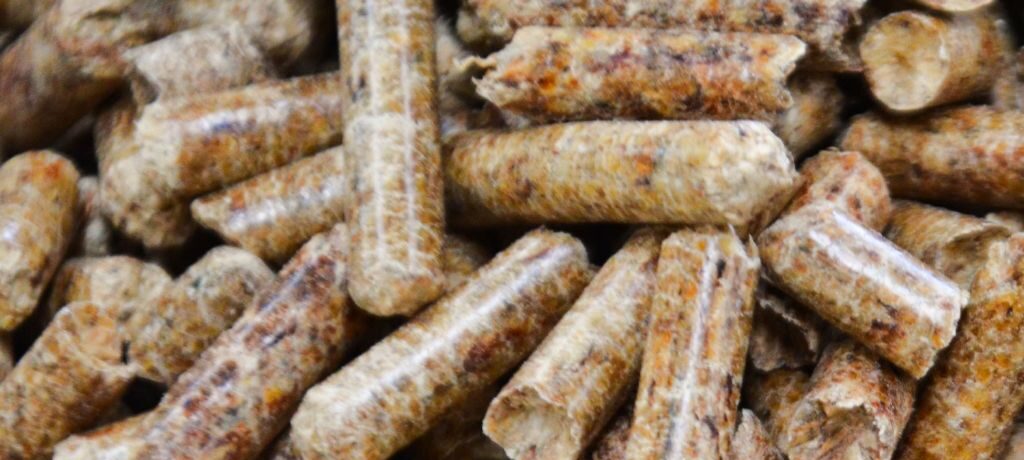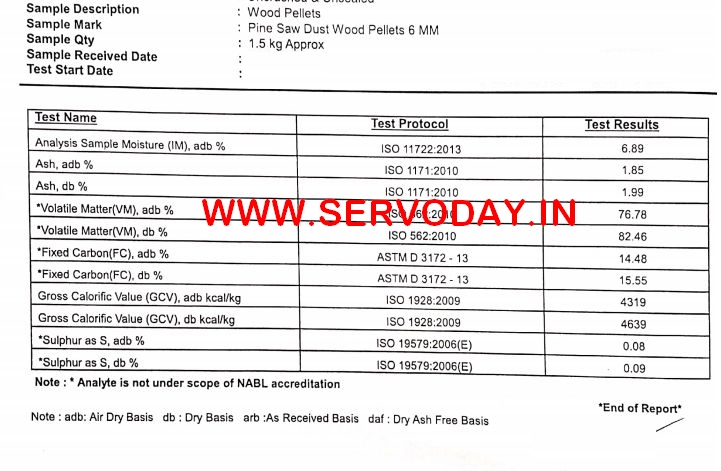
How do the test results of Biomass – Pine Sawdust Pellets compare in terms of moisture, ash, and energy content?
Test Results Summary for Pine Sawdust Pellets (6mm)

- Moisture ADB % (As Dried Basis) – 6.89%
This shows the moisture content of the sample after being air dried. It indicates that 6.89% of the sample’s weight is moisture. Low moisture content is desirable for higher energy content during combustion. - Ash ADB % (As Dried Basis) – 1.85%
This represents the amount of ash left after burning the sample (with some moisture). Ash is the non-combustible residue, and a lower percentage is better, as it means less waste after burning. - Ash DB % (Dry Basis) – 1.99%
This is the ash content when all moisture is removed (dry basis). It’s slightly higher than ADB, since it accounts for no moisture at all. The low ash percentage (close to 2%) is a positive sign for efficient combustion. - Volatile Matter (VM) ADB % (As Dried Basis) – 76.78%
Volatile matter includes the compounds that vaporize when the pellet is heated. The higher the volatile matter, the easier the biomass ignites, which is good for efficient combustion. - Volatile Matter (VM) DB % (Dry Basis) – 82.46%
Similar to the above, but on a dry basis. This shows the volatile matter percentage after all moisture has been removed. A high VM value is good for easy ignition and efficient fuel use. - Fixed Carbon (FC) DB % (Dry Basis) – 14.48%
Fixed carbon is the solid carbon left after volatile matter is released. It contributes to the heat produced during combustion. Here, 14.48% of the sample (dry basis) is fixed carbon. - Gross Calorific Value (GCV) ADB kcal/kg (As Dried Basis) – 4,319 kcal/kg
GCV represents the energy content of the biomass. The higher the value, the more energy the pellet can provide. On an ADB basis, this value indicates the energy content considering the remaining moisture. - Gross Calorific Value (GCV) DB kcal/kg (Dry Basis) – 4,639 kcal/kg
This is the energy value without any moisture present. It is slightly higher than the ADB GCV because no moisture is there to reduce the heat potential. It indicates how much energy is theoretically available when the sample is completely dry. - Sulphur as S, ADB % (As Dried Basis) – 0.08%
Sulphur content is important as it can cause harmful emissions. A lower sulphur content (0.08%) is favorable for a cleaner burning process. - Sulphur as S, DB % (Dry Basis) – 0.09%
Similar to the above, but with all moisture removed. A low value (close to 0%) is ideal to reduce the potential environmental impacts.

Key Takeaways:
- Moisture Content: Low moisture (6.89%) is good for efficient combustion.
- Ash Content: Low ash content (around 2%) means less residue after burning, leading to less cleanup and maintenance.
- Volatile Matter: High volatile matter (around 82%) means that the pellets are easy to ignite and will combust efficiently.
- Fixed Carbon: Fixed carbon contributes to sustained burning after initial ignition.
- Calorific Value: The GCV (4,639 kcal/kg dry basis) is relatively high, indicating that the pellets have a good energy yield.
- Sulphur Content: Very low sulphur content (< 0.1%) is good for minimizing pollution and maintaining clean emissions.
This report indicates that the Pine Sawdust Pellets have a good energy content with low moisture and ash, making them suitable for efficient combustion with minimal environmental impact.

